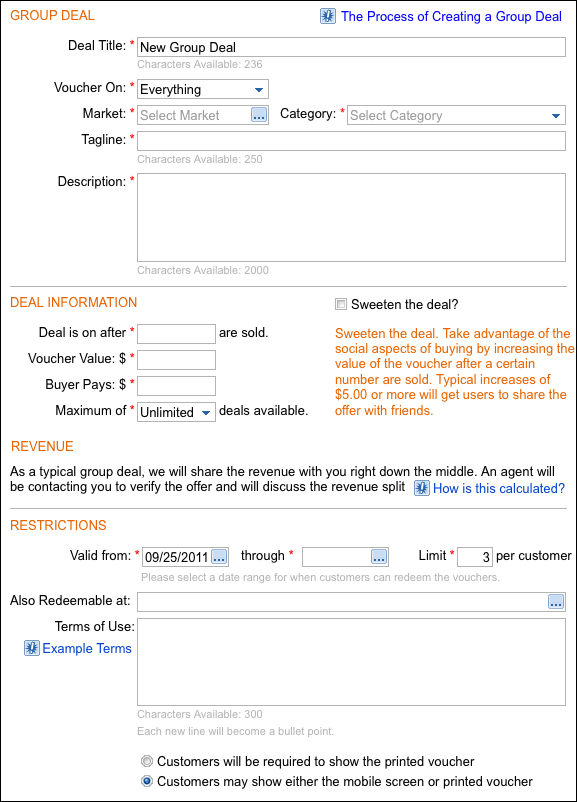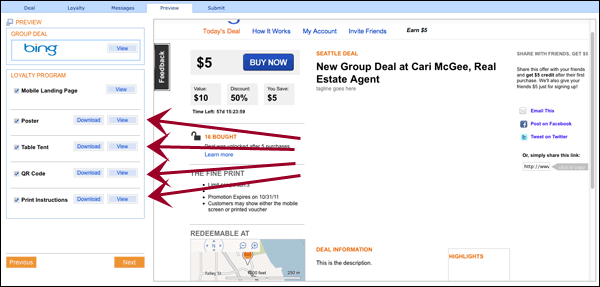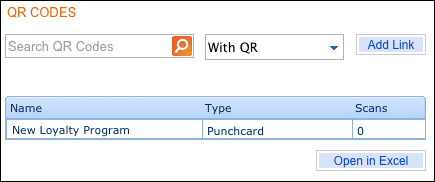Bing Expands Local Business Portal: Group Deals, Virtual Punchcards & New Print Collateral
Google may have most of the local traffic, but Bing’s local business tools are running laps around Google’s. When it launched in April, the Bing Business Portal already had outdone Google with several important features. Now, a new set of tools that Bing added within the past couple weeks puts it even further ahead of […]
 Google may have most of the local traffic, but Bing’s local business tools are running laps around Google’s.
Google may have most of the local traffic, but Bing’s local business tools are running laps around Google’s.
When it launched in April, the Bing Business Portal already had outdone Google with several important features. Now, a new set of tools that Bing added within the past couple weeks puts it even further ahead of Google in many ways — but not all. Here’s a look at what’s new in the Bing Business Portal (BBP).
Group Deals
The BBP has offered a basic Deals tool since April. These are straight-ahead, single customer deals like dollar-based or percent-based discounts. Now, local business owners can create Group Deals that trigger only when a certain number of customers buy. The business owner can create the deal and establish all terms/requirements right inside the BBP.
As the “Revenue” section above shows, Bing is splitting revenue 50/50 with the small business owner. Groupon has historically offered the same revenue split, but some businesses have reportedly been able to negotiate a better rate. (The New York Times recently reported that Groupon is averaging 42 percent of coupon revenues, and says Google reportedly gets 35% from Google Offers.)
Bing’s program is not fully self-serve. Once the merchant creates a group deal in the BBP and submits it to Bing, a Bing “city manager” will contact the business owner within three days to discuss the offer. In a recent briefing call, Bing explained that the city manager may suggest changes to the offer if the original version is unlikely to be a success.
At the moment, Bing’s Group Deals is only available in 12 markets: Atlanta, Austin, Boston, Chicago, Dallas/Ft. Worth, Honolulu, Los Angeles, New York, San Diego, San Francisco, Seattle and Medford, Ore. Bing says Group Deals will eventually be available across the U.S.
Virtual Punchcards (Loyalty Offers)
Another new tool in the Bing Business Portal gives local business owners the opportunity to start a loyalty program using what you might call “virtual punchcards.” Right now, this is only available in conjunction with the Group Deals program, but Bing says it would consider separating the two if there’s enough demand from local business owners who only want to use the loyalty program tool.
The loyalty program requires customers to own a smartphone — thus the “virtual punchcard” name. The customer joins a merchant’s program by scanning a QR code and, once in the program, the customer re-scans the QR code to get a “punch” from the business with each visit/purchase. There’s a bit of friction in the process due to the smartphone requirement, and because the customer may need to hand over his/her smartphone so that the business employee can take care of the “punch.”
As the local business owner is using the BBP to setup a loyalty program, Bing automatically creates printable support material — one PDF is a sign with the QR code for posting in the business, and another PDF offers step-by-step instructions for the business owner to share with employees. There are additional print options available during the creation process, including posters and table tents.
New Options To Create Print Material
That print focus has been extended across the Bing Business Portal. A “Create” sub-menu option that gives business owners the chance to make a variety of print collateral is available in more places than at launch.
For example, from the standard Business tab, users can create two-sided business cards, posters or post cards. From the Events tab, post cards and posters are available. It’s a pretty complete online builder that lets users choose colors, add images and more. (In fact, if the business has uploaded a company logo, the create tool will, by default, initially create a business card design with matching colors.)
The end-result of making a business card is a free, downloadable hi-res PDF that can be sent or taken to a preferred printer. But interestingly, the BBP lets users send poster and post cards designs to a local Office Depot for printing.
After sending the design to Office Depot, the store will contact the business owner by phone to discuss pricing and scheduling.
What’s Still Missing?
In addition to what’s mentioned above, Bing has made several smaller updates to the tools and features that were available when the BBP launched. Add it all together, and Bing offers a much more robust and valuable marketing tool — not just online marketing, either — for small business owners than what Google Places offers.
But there’s at least one key piece that Bing lacks: analytics/data.
Right now, there’s very little information for business owners about how customers are interacting with their Bing local listing. The closest thing is a page that shows how often QR codes created within the BBP have been scanned.
On the other hand, the Google Places dashboard tells business owners how often their local listing was displayed, how often “actions” were taken (clicks to the business website, requests for driving directions) and offers a neutered list of search queries that led the listing to appear in search results. The data is far from great, but it’s something — and it’s more than Bing provides.
That’s one very thing Google Places offers that Bing’s Business Portal doesn’t. I’m guessing that won’t be the case for too long, though.
Contributing authors are invited to create content for Search Engine Land and are chosen for their expertise and contribution to the search community. Our contributors work under the oversight of the editorial staff and contributions are checked for quality and relevance to our readers. The opinions they express are their own.
Related stories
New on Search Engine Land




